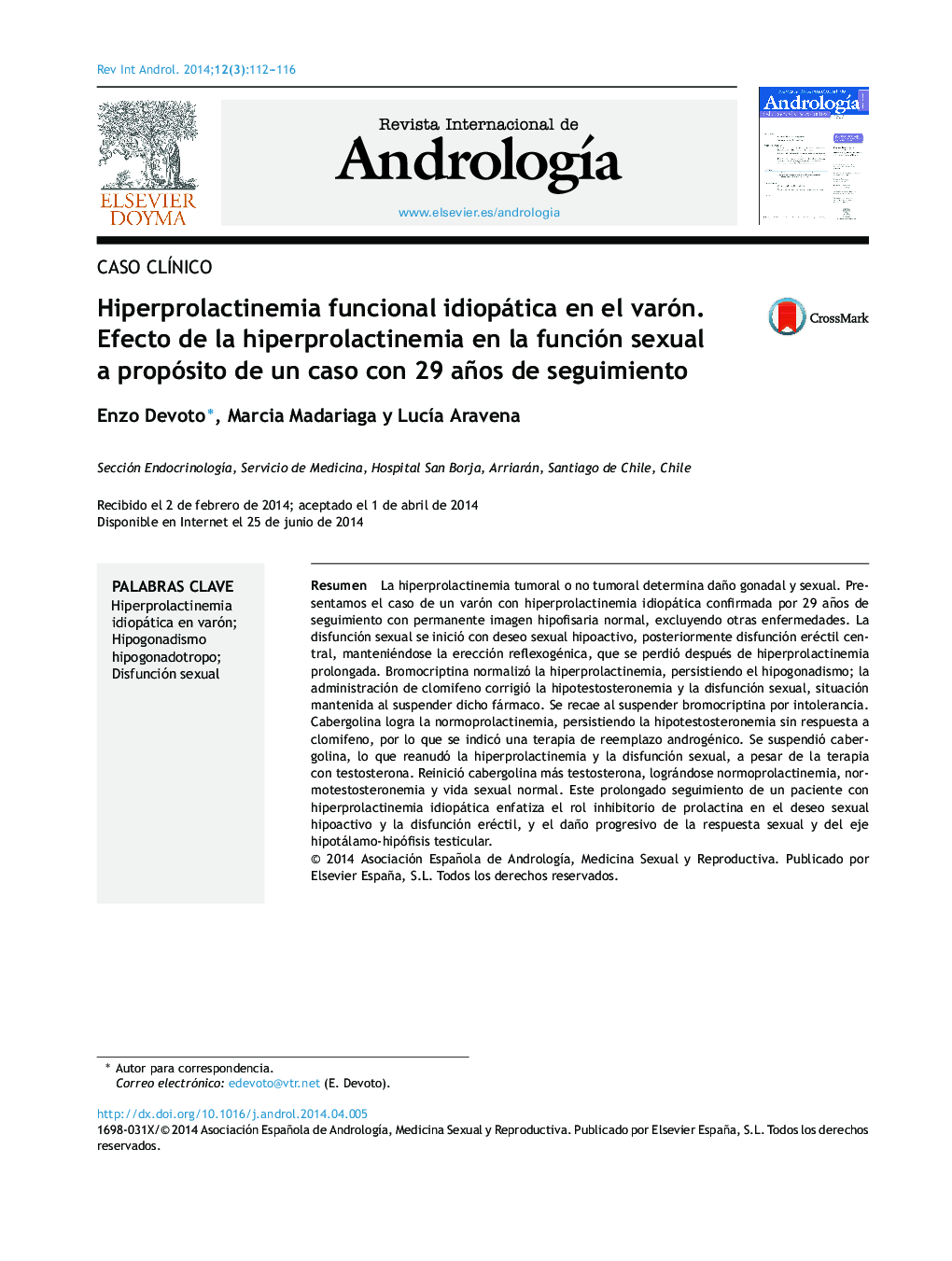| Article ID | Journal | Published Year | Pages | File Type |
|---|---|---|---|---|
| 915841 | Revista Internacional de Andrología | 2014 | 5 Pages |
Abstract
Tumoral and non-tumoral male hyperprolactinemia cause gonadal and sexual damage. We present a man with idiopathic hyperprolactinemia and hypogonadotropic hypogonadism confirmed throughout the 29 years of follow-up, with permanent normal pituitary image. Other etiologies for hyperprolactinemia were excluded. Sexual dysfunction first began with hypoactive sexual desire and later central erectile dysfunction. Reflexogenic erection was normal, but was lost after chronic hyperprolactinemia. Bromocriptine normalized hyperprolactinemia, but hypogonadotropic hypogonadism persisted. Clomiphene administration improved hypogonadotropic hypogonadism and sexual dysfunction. Bromocriptine and clomiphene were mantained for 2 years. Clomiphene withdrawal did not cause a relapse. After bromocriptine withdrawal due to intolerance, a relapse of hyperprolactinemia and sexual dysfunction occurred. Cabergoline administration normalized hyperprolactinemia, but hypogonadotropic hypogonadism persisted. Testosterone replacement therapy was indicated because of the negative clomiphene response. Cabergoline withdrawal caused hyperprolactinemia and sexual dysfunction despite testosterone therapy. Cabergoline plus testosterone produce normal prolactin, testosterone and sexual function. This case of idiopathic hyperprolactinemia emphasizes the inhibitory role of prolactin in hypoactive sexual desire, erectile dysfunction and gonadal function.
Related Topics
Health Sciences
Medicine and Dentistry
Surgery
Authors
Enzo Devoto, Marcia Madariaga, LucÃa Aravena,
